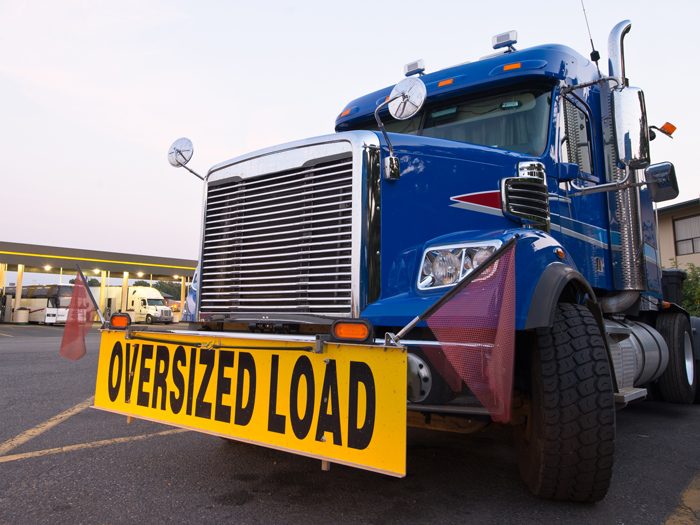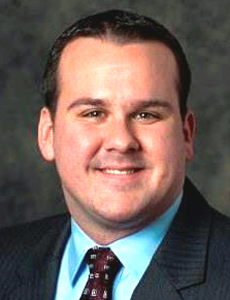Total Worker Health
Healthier Workforce, Healthier Bottom Line

Wellness programs started catching on around a decade ago as a way for human resources to reduce medical costs and absenteeism. Typical programs included weight loss competitions, daily step goals or smoking cessation assistance.
Eventually, it began to catch on that healthier workers are also less prone to injury.
That led to what you might call “Wellness 2.0” … a combined wellness and safety program experts call “Total Worker Health.”
Deteriorating Health
When trucking company Tradewinds Transportation LLC updated its equipment and safety gear, it also added a wellness program.
Its workers’ compensation program saw clear benefits. Tradewinds’ experience mod fell to .71 from 1.01 in the decade since the wellness and safety program was first introduced.
The company’s annual workers’ comp premium fell to $98,000 from $122,000 — even as payroll, truck fleet and headcount tripled.
But the greatest gains started to show up two years ago when Tradewinds beefed up its safety program with an addition of a wellness program as an employee retention tool, said Heather Hayes, operations manager at Tradewinds.
Hayes was researching the causes behind the industry’s driver shortage when she found shocking statistics: Truck drivers live about 16 years less than the average employee; about 85 percent have hypertension and 80 percent are obese.
“Their deteriorating health was scary, statistically,” Hayes said. “And we were only contributing to the cause of the problem.”
Tradewinds looked everywhere for opportunities to improve. It built a walking trail around their Oregon office. It switched kitchen offerings to more healthy, grab-and-go options such as fruits, eggs, nuts and yogurt.
“Their deteriorating health was scary, statistically. And we were only contributing to the cause of the problem.” — Heather Hayes, operations manager, Tradewinds Transportation
Drivers received water bottles and rice cookers to take on the road so they could avoid the rest stop standard fare, like 72-ounce sodas and cheeseburgers. A nutritionist surveyed the most frequently visited truck stops to create a list of healthy options.
They also received resistance bands and on-the-road exercise programs. Each driver got a pedometer and information guide which told them how many loops walked around the truck equals a mile.
Employees received diet and exercise education, healthy recipes and mindfulness classes for stress management. They even allow drivers to bring kids along for short stints to help with their work/life balance.
During the 12-week pilot program, drivers lost an average 13 pounds.
Research conducted by the National Safety Institute found that after two years on the wellness program, those drivers who initially ranked in the “high risk” group fell to “medium risk” and stayed there.
Those initially labeled “medium risk” dropped to “low risk.”
“Once they learn it, they cannot unlearn it,” Hayes said. “Employees did not return to their old habits.”
Drivers quit smoking and lost weight; one employee lost more than 80 pounds. In an industry that has an average annual turnover rate of 110 percent, Tradewinds’ is 17 percent, and its experience mod continues to fall.
The program is so successful that Tradewinds now offers it year round.
Whole-Person Approach
The U.S. National Institute for Occupational Safety and Health (NIOSH) created a Total Worker Health program in 2011 and offers its template and research for companies to start their own.
Deb Fell-Carlson, a policyholder safety and wellness adviser at SAIF, Oregon’s not-for-profit, state-chartered workers’ compensation insurance company, said she sees companies using wellness to reduce workers’ comp costs in a big way.
“There’s no reason wellness and safety can’t come together. It’s more efficient and you can make your programs more effective.” — Tom Heebner, senior vice president/risk consultant, HUB International
SAIF issues almost half of the policies in Oregon and provides coverage to more than 600,000 workers. Fell-Carlson helps clients, including Tradewinds, combine safety practices with wellness program to offer a total worker health program.
Pinnacol Assurance, based in Colorado, studied the effect its wellness offerings had on clients’ costs and found that for every $1 invested in a worksite wellness program, companies saved $2 in medical costs and productivity improvements.
Approximately 97 percent of participants in Pinnacol’s workplace wellness program reported improvement in employee safety.
Workplace wellness helps employees achieve better health in seven key areas: cancer, coronary, fitness, nutrition, safety, stress and weight management.
Addressing certain health risk factors, such as smoking, obesity and diabetes, can reduce the risk of workplace injuries in less than a year, according to Pinnacol research.
“People who enjoy work are less likely to file workers’ comp claims.” — Ron Z. Goetzel,vice president, consulting and applied research, Truven Health Analytics, and senior scientist, Johns Hopkins Bloomberg School of Public Health
For example, obese workers can cost employers $5,000 more each year than their non-obese peers. When an obese worker is injured, it takes five times longer than their peers for them to return to work.
A 2007 Duke University study found maintaining healthy weight not only is important to workers but should also be a high priority for their employers given the strong effect of BMI on workers’ injuries. It recommends companies create work-based programs targeting healthy eating and physical activity.

Ron Z. Goetzel, VP, consulting and applied research; Truven Health Analytics; and senior scientist, Johns Hopkins Bloomberg School of Public Health
Morale is a factor too. Research shows when employees like going to work and like their co-workers, it actually makes a difference in workers’ comp costs, said Ron Z. Goetzel,vice president, consulting and applied research at Truven Health Analytics, and senior scientist at Johns Hopkins Bloomberg School of Public Health.
Simply put, said Goetzel, “People who enjoy work are less likely to file workers’ comp claims.”
Focusing on the whole person makes sense. Participating employees are more alert, healthier and engaged in their jobs.
That correlates to less obesity, alcohol consumption, smoking, depression and poor control of biometric values, which in turn correlates to fewer safety incidents and fewer claims, he said.
“This whole movement from traditional health wellness programs has enlarged into the area of organizational health,” Goetzel said.
Busting Silos
Risk managers may struggle to quantify how well the wellness program works at reducing workers’ compensation costs.
To convince upper management, risk managers must start with a diagnostic assessment, Goetzel said. Create a big picture view of how employers are paying for the health and safety of workers.
Wellness programs of the past were typically the domain of HR. But risk managers working together with HR on a wellness program have much to gain.
“The challenge is making that case and then drawing the resources from those individual silos to come together to approach it as total population health management,” said Philip Swayze, director of health and performance at HUB International.
For example, if the HR team changed the way it financed health benefits, it might not think to tell risk management. But knowing about it can help risk managers anticipate fluctuations in workers’ comp.
“Potentially, if they changed to a larger deductible, then it may incentivize employees to file claims elsewhere,” Swayze explained.
“It’s hard for folks to cross over and be collaborative with groups they don’t normally collaborate with,” said Tom Heebner, senior vice president/risk consultant at HUB International. Heebner provides workers’ compensation reduction guidance to his HUB clients.
“There’s a wall thrown up pretty quick when you try to get performance statistics or wellness statics from the human resource side,” he said. That’s due to fear of health privacy laws.
Chances are these two groups provide different training on that same topic, and they don’t talk or collaborate and tie things together, he said.
“There’s no reason wellness and safety can’t come together. It’s more efficient and you can make your programs more effective.”
Once you decide on a program, how well you communicate to your employees may determine its success. Employees need to understand what is being offered, how to sign up, and how it will benefit them.
“All you want to do is get some small wins,” Heebner said.












